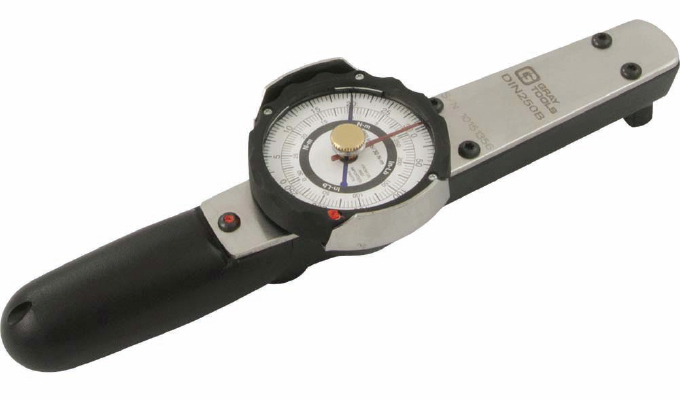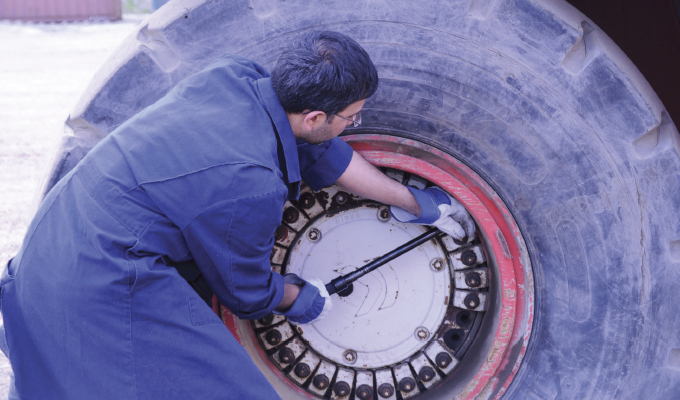Precision and strength are critical considerations for deciding which torque wrench is right for you. But picking the best torque wrench isn’t just about how well it fastens. After all, it’s not about just getting the job done, but getting the job done right.
CLICK-TYPE
Click-type torque wrenches are the most common. They have the same functionality as a ratchet with the added advantage of a distinct breaking action when it reaches the desired torque value.
Available torque values are displayed on a dual scale (metric, expressed in Newton-meters, and imperial, expressed in foot-pound or inch-pound) on the barrel of the tool. Torque wrench capacity is indicated by the minimum and maximum value on the scale. The operator sets the desired torque value by unlocking the wrench and twisting the handle, which moves a precision indicator along the scale.
Just like a ratchet, the head of click-type torque wrenches houses the gear and paw mechanism. The repetitive force applied to its mechanism leads to the need for regular maintenance and re-calibration.

DIAL-TYPE
Dial-type torque wrenches are considered the most accurate torque wrenches available. These wrenches feature a double-end square drive that can tighten and loosen fasteners. The torque value is displayed on an easy-to-read, analog, dual-scale dial (hence their name). Inside the dial, there are two memory needles. The first needle is set to the desired torque setting while the second needle is set to zero. As torque force is applied, the second needle moves along the dial. When the two needles meet, the desired torque has been achieved.
Due to their simpler torque mechanism, dial-type torque wrenches don’t require as much maintenance and re-calibration as click-type torque wrenches. Most models feature an audio-visual alert that signals the operator when the target torque is reached.
Dial-type torque wrenches are widely used in quality control applications to ensure the actual torque applied in the production process complies with the stated specifications.

ELECTRONIC
Electronic torque wrenches use an electronic sensor to measure torque and display the torque value on a digital display. An audible and visual indicator informs the user that they are approaching the desired torque value and when the exact value has been reached.
These torque wrenches are very accurate instruments, but their delicate construction requires extra care, and they need batteries to operate. They’re also one of the most expensive styles available. However, they can be considered four torque wrenches in one, due to their ability to set torque values in four scales: foot-pounds, inch-pounds, Newton-meters, and kg-cm.
Electronic torque wrenches are ideal in automotive and transportation settings, as they can be linked to hardware such as laptops, tablets and printers. In many heavy-truck repair environments, it is mandatory that printed proof of wheel-torque adjustments be available as part of certified repair service.
BEAM WRENCHES
Finally, beam torque wrenches are the most simplistic torque wrenches available. However, they are difficult to read and the least accurate. As a result, they have virtually been eliminated from use in professional working environments.
At the end of the day, just remember that if you take care of your torque wrench, it’ll take care of you. From the fasteners that hold your equipment together, to the jobs that keep your business together, get peace of mind knowing that the right torque wrench will keep it secured.
about the author
Paul Dean is the VP of Operations at Gray Tools. He has over 30 years of manufacturing and operations experience, helping thousands of professionals build and maintain their Gray and Dynamic tool collections for years of reliable use. For more, visit www.graytools.com.


